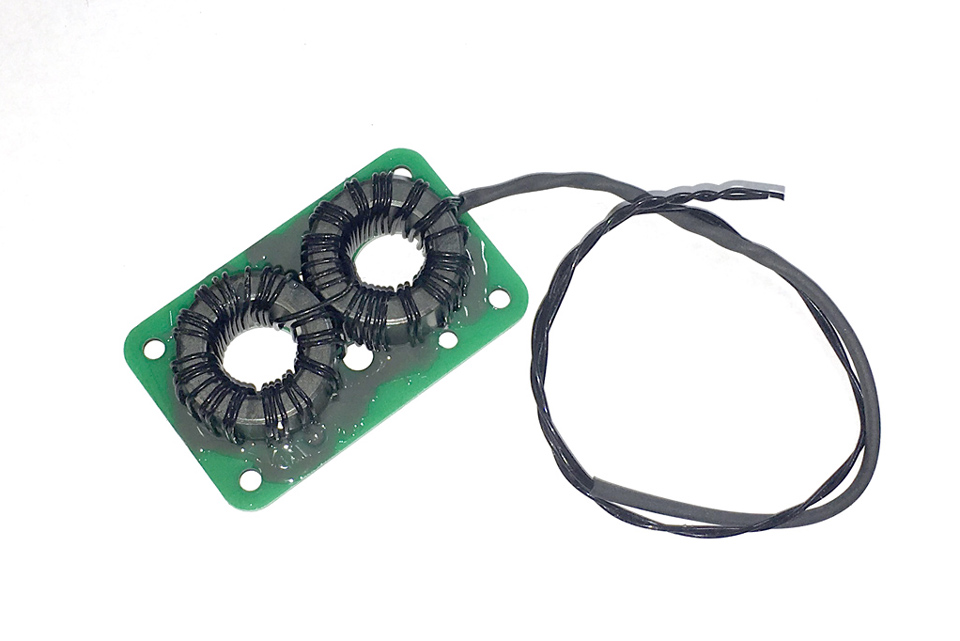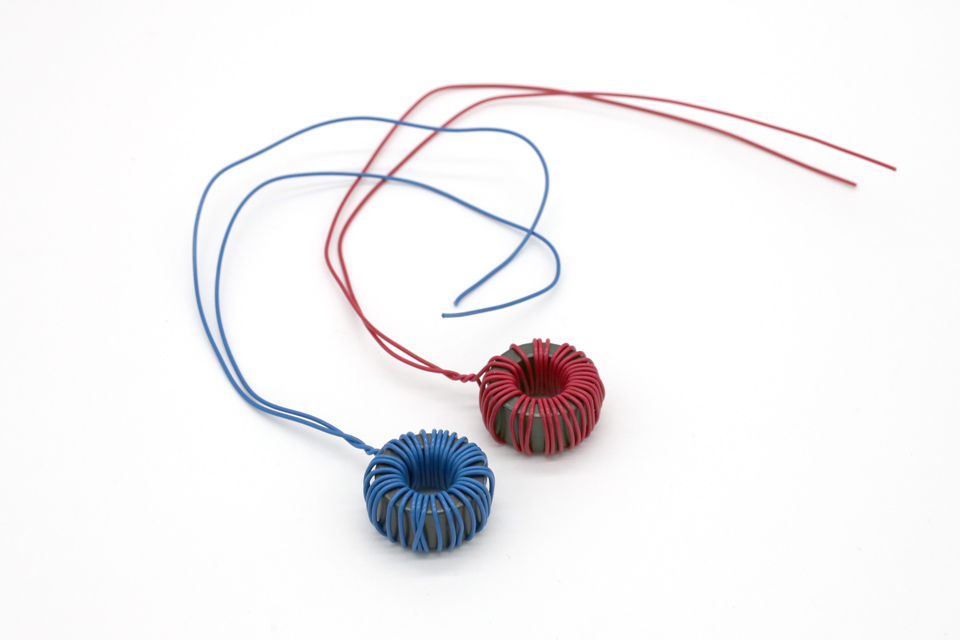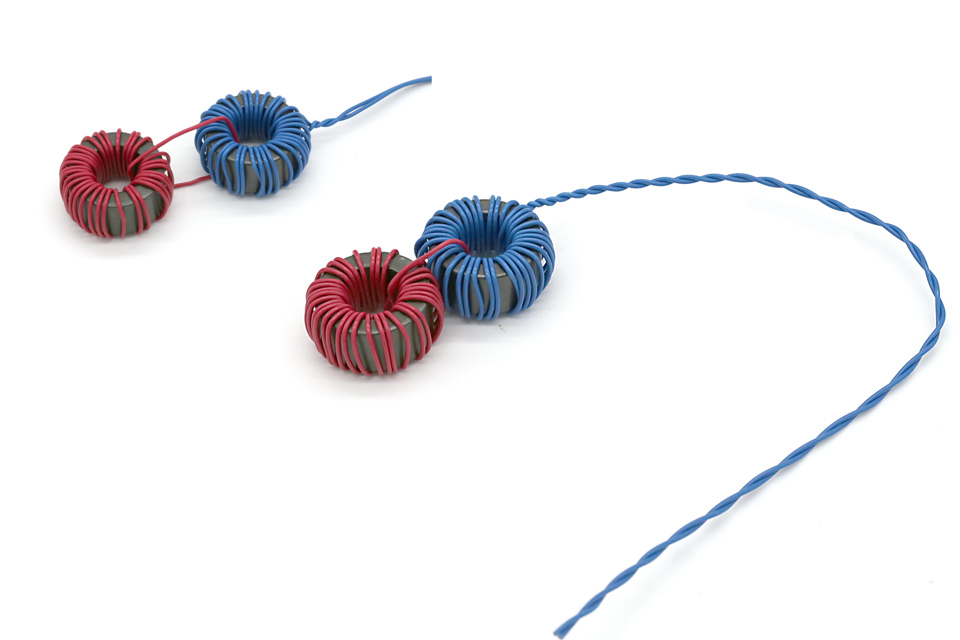How are Current Transformers Used in Tesla Coils?
Before we begin, let's first understand the need for current transformers in modern day double resonant solid state Tesla coils (DRSSTCs). Current transformers are required to sense current in the primary circuit and is used by a DRSSTC controller in the following ways:
- Current Feedback - DRSSTC controllers are self-resonant and thus require a sample of the primary current waveform to induce switching of the half-bridge or full-bridge power circuits.
- Over Current Detection - To protect the half-bridge or full-bridge power circuits, there needs to be an over current limiting circuit which disables the bridge once a preset current limit is exceeded. Using a current transformer to sense the primary current is used in this case to provide the sense voltage for the over current limit circuit.
In each of the above cases, it is typical to use a current transformer with an effective turns ratio of 1000:1. This means, that with 1000A of sensed current, a resultant 1A of current would be induced in the output winding.
What is a Cascaded Current Transformer?
A cascaded current transformer provides an easy way to measure extremely high peak currents, typically over 1000 amps, in your Tesla coil primary circuit without requiring the tedious task of winding over a 1000 turns on a single core. I mean after all, who has 3 hours of spare time to sit around and wind 1000 turns of wire on a single ferrite core. However, with a cascaded current transformer, one can use two cores cascaded together to create the same current turns ratio using only a fraction of the turns required per core.
How Does a Cascaded Current Transformer Work?
With a conventional single core current transformer, the effective turns ratio is equivalent to the following:
Effective Turns Ratio = Number of turns : 1
This means, that if there are 1000 turns of wire on the core, then 1000A of current passing through the core will induce 1A of current in the output winding of the core as shown below:
Effective Turns Ration = 1000:1
With a cascaded current transformer using two cores, the effective turns ratio becomes equivalent to the following:
Effective Turns Ratio = (Core 1 # Turns x Core 2 # Turns) : 1
Looking at the above equation, it is very easy to see that one can obtain nearly the same 1000:1 effective turns ratio as the single core current transformer but in this instance only requiring 32 turns per core.
Effective Turns Ratio = (32 x 32) = 1024:1
Winding 64 total turns across two cores is much more manageable than winding 1000 turns on a single core.
Building your Own Cascaded Current Transformer
Building your own cascaded current transformer is incredibly simple. The first thing to do is obtain the parts required to build the current transformer which are shown in the list below:
Parts Required:
- Ferrite Core 77-1 - Use two of these cores for low to medium power primary circuits. The size of the core is typically driven by the diameter of the primary wire being used. A 77-1 core can support wire diameters up to 8 AWG.
- Ferrite Core 5000-1 - For higher power primary circuits where thicker wire is being used, a larger core is typically used. Generally one 5000-1 core and one 77-1 core are used in this instance. A 5000-1 core can support wire diameters up to 2 AWG if required.
- 24 AWG Wire - This is the wire that will be used to wind the turns on the cores. We recommend 24 AWG although other sizes can be used.
Winding the Cores
In this example, we will wind a 1000:1 cascaded current transformer. Since we can't get exactly 31.6 turns per core to get a perfect 1000:1 ratio using two cores, we will instead use 32 turns per core. This will give an effective turns ratio of 1024:1 which is close enough to 1000:1 for our needs.
Effective Turns Ration = (32 x 32) = 1024:1
For a 77-1 core, start with a 7 foot length of 24 AWG wire. For a larger 5000-1 core, start with an 8 foot length of 24 AWG wire. Begin by winding 32 turns of wire evenly spaced on the first core. You want the windings to be roughly centered on the piece of wire, so leave about 12" of extra wire before you begin winding the core. When you are finished winding the first core, repeat the same 32 turn winding on the second core. You will be left with two wound cores as shown in the image below. I have used two separate colors for photographic purposes only.
The next step, as shown in the image below, is to pass the winding of the first core through the middle of the second core and electrically connect the ends of that winding by soldering it together. When finished, use an adhesive or epoxy to attach the cores together end-to-end. Finally, leave at least 12" of winding length on the second core to connect to your DRSSTC controller or other current sensing device. Be sure to twist the two ends of the final winding together to minimize inductance.
For a typical DRSSTC Tesla coil, two of these 1024:1 cascaded transformers would be used - one for current feedback, and one for over current sensing. For the largest high power DRSSTC Tesla coils, it is recommended to use a three-way cascaded current transformer using a single 5000-1 core and two 77-1 cores. This arrangement will be covered in a future instructional article.




